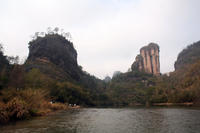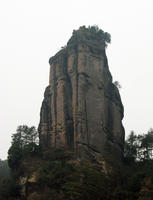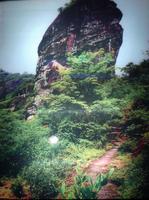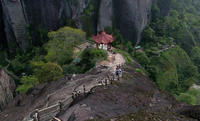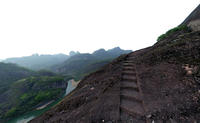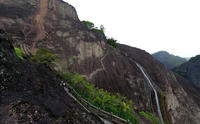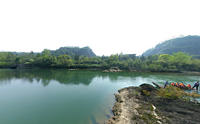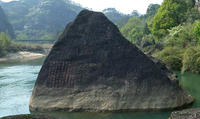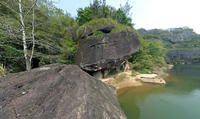You are in: Asia -> China -> Mount Wuyi, and traditional search or Image Gallery will yield results of this site only
Mount Wuyi
| Site number: | 911 |
|
| Type of site: | Mixed | |
| Date of Inscription: | 1999 | |
| Location: | Asia, China, Fujian Province, Wuyishan City | |
Up to 75 images are shown here. Click on each for more details or on Image Gallery for more images.
| Description: | Mount Wuyi is south-east China’s most exceptional area for biodiversity conservation; a large number of ancient, relict species, many of them endemic to China find refuge at the site. The development and spread of neo-Confucianism (influential in East Asia since the 11th century) originated in the setting of the site’s serene beauty which is complimented by dramatic gorges of the Nine Bend River, as well as numerous temples and monasteries, many of which now lie in ruins. The Han dynasty rulers built a large administrative capital at nearby Chengcun during the 1st century B.C.; its massive walls enclose an archaeological site of great importance. --WHMNet paraphrase from the description at WHC Site, where additional information is available. For 360 degree imaging of this site, click here. | |
| The Wuyi Mountains (Chinese: 武夷山; pinyin: Wǔyí Shān) are a mountain range located at the prefecture Nanping, at the northern border of Fujian province with Jiangxi province, China. The mountains cover an area of 60 km². In 1999, Mount Wuyi entered UNESCO's list of World Heritage Sites, both natural and cultural. It is the most outstanding biodiversity conservation zone of Southeast China. Numerous types of tea are produced around Mount Wuyi, it is the origin of the real Da Hong Pao tea and Lapsang souchong, further described in Wuyi tea. Human settlement on the slopes of Mount Wuyi can be traced back 4,000 years by archeological remains. During the Western Han Dynasty, the ancient city of Chengcun was the capital of the Minyue kingdom. In the 7th century, the Wuyi Palace was built for emperors to conduct sacrificial activities, a site that tourists can still visit today. The mountains were an important center of Taoism and later Buddhism. Remains of 35 academies erected from the era of the Northern Song to the Qin Dynasty and more than 60 Taoist temples and monasteries have been located. However, most of these remains are very incomplete. Some of the exceptions for which authentic remains are preserved are the Taoyuan Temple, the Wannian Palace, the Sanqing Hall, the Tiancheng Temple, the Baiyun temple, and the Tianxin temple. The area is the cradle of Neo-Confucianism, a current that became very influential since the 11th century.The Wuyi Mountains are the largest and most representative example of Chinese subtropical forests and South Chinese rainforests' biodiversity. Its ecology has survived from before the Ice Age around 3 million years ago. Biologists have been conducting field research in the area since 1873. --Wikipedia. Text is available under the Creative Commons Attribution-ShareAlike License. For 360 degree imaging of this site, click here. | ||
| Source: | http://whc.unesco.org/en/list/911 | |
| Reference: | 1. UNESCO World Heritage Center, Site Page. | |




